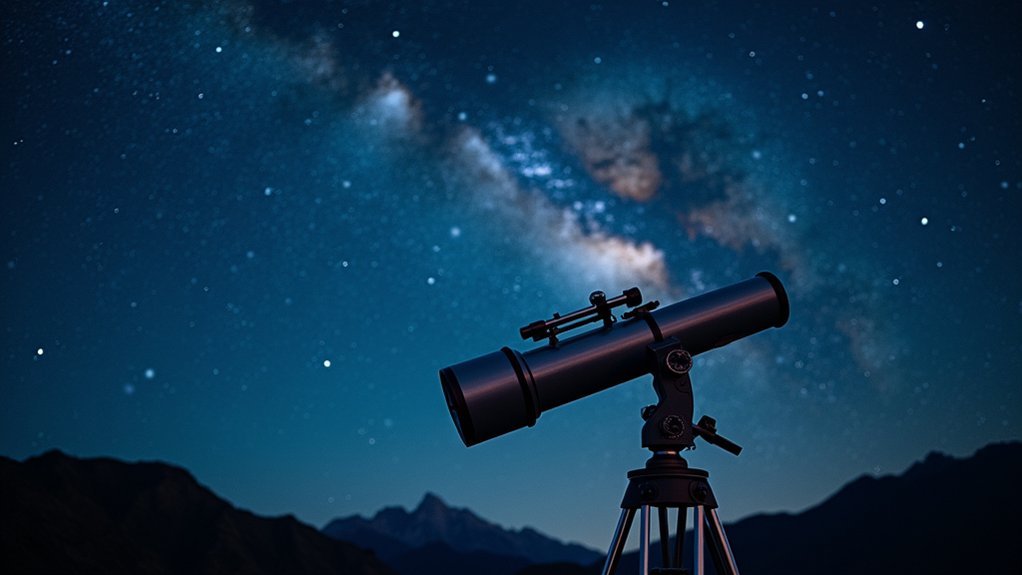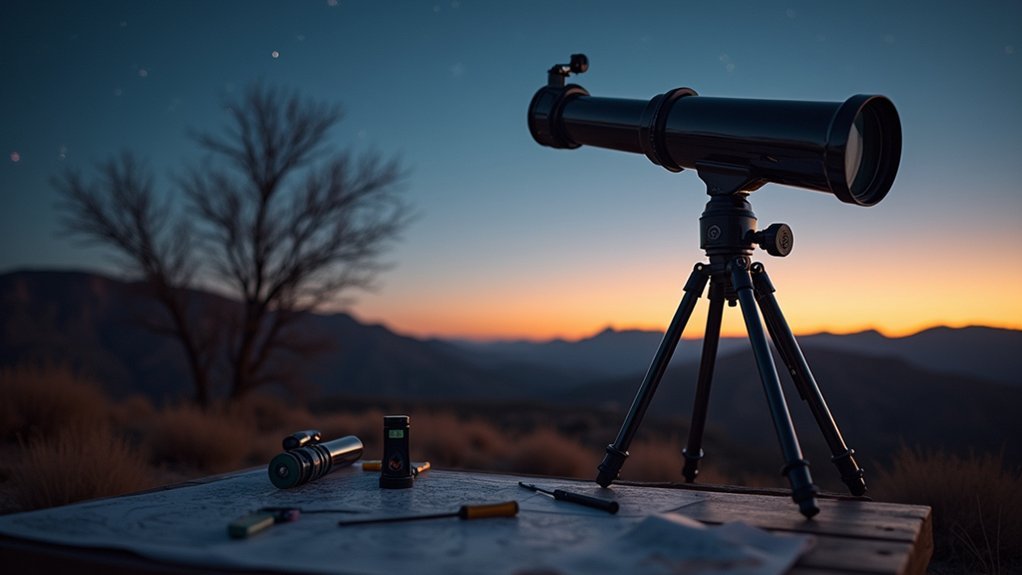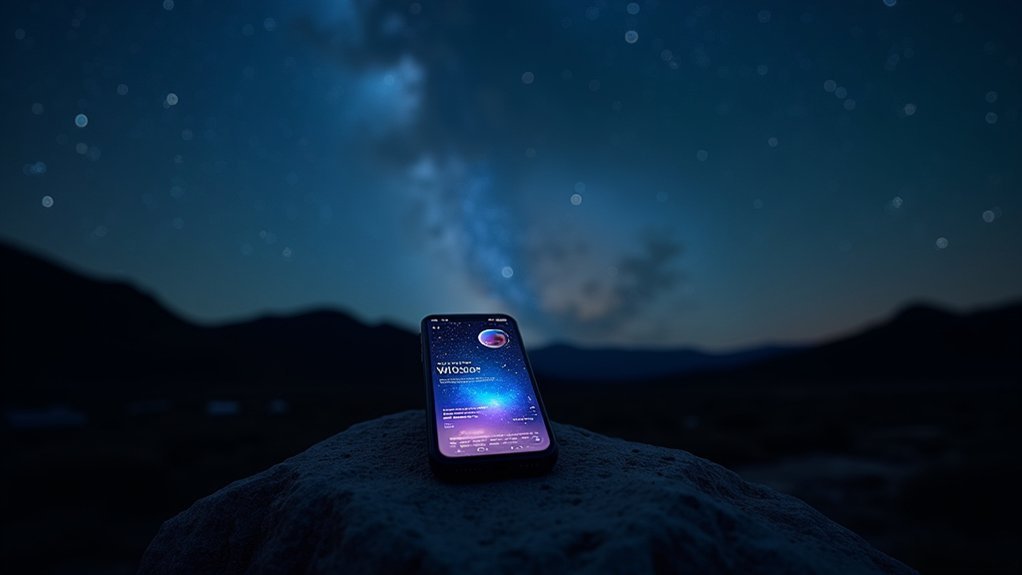To find celestial objects quickly, start by mastering star hopping—use bright stars as stepping stones to locate fainter objects. Next, leverage digital sky maps that show what’s visible from your location and provide exact coordinates. Finally, understand altitude and azimuth measurements; higher altitude objects (30°-90°) offer clearer viewing than those near the horizon. These three techniques will transform your stargazing experience from frustrating to fulfilling as you discover the night sky’s hidden treasures.
Master the Art of Star Hopping

While advanced telescopes with computerized tracking have their place, mastering star hopping remains an essential skill for any serious astronomer. This technique uses bright stars as stepping stones to locate fainter celestial objects during your observing sessions.
Start by identifying a prominent constellation visible to the naked eye, then use a star chart to plan your route. Remember that one degree in the sky equals about two moon widths—useful for estimating distances as you navigate from star to star.
Begin with visible constellations as your anchor, then chart your course using the moon’s width as your celestial measuring stick.
Many Star Clusters and other deep-sky treasures hide near recognizable patterns, making them perfect targets for this method.
Practice regularly to develop your spatial awareness and expand your field of view. You’ll soon find yourself confidently locating objects that once seemed impossible to find.
Utilize Digital Sky Maps for Precise Location
Although traditional star charts serve their purpose, digital sky maps have revolutionized how astronomers locate celestial objects. For newcomers to astronomy struggling with their first telescope, Sky Map apps offer intuitive navigation of the night sky, especially in the Northern Hemisphere.
- Input your exact GPS location to see astronomical objects currently visible above you
- Filter by category to find things that are easy to see, like planets and bright stars
- Check altitude and azimuth coordinates for precise pointing of your telescope
- Focus on objects near zenith for ideal viewing conditions with less atmospheric distortion
- Learn celestial coordinate systems (RA and Dec) through interactive visualization
These digital tools transform the hunt for celestial wonders from frustrating guesswork into an efficient, educational experience—even when you’re still learning to navigate the cosmos.
Understanding Altitude and Azimuth for Quick Targeting

When you’re standing beneath the night sky with your telescope, understanding two simple numbers can make all the difference between frustration and discovery.
Altitude and azimuth coordinates work together as your celestial GPS system, helping you find your way around the night sky.
Altitude tells you how high the target object sits above the horizon (0° to 90°), while azimuth reveals its compass direction (0° to 360°).
Objects at higher altitudes are typically easier to observe clearly since you’re looking through less atmosphere.
When someone mentions an object is at “30° altitude, 120° azimuth,” you’ll know to face southeast and look about one-third of the way up from the horizon.
Most celestial objects that seem difficult to find become easy to target once you’ve mastered these coordinates.
Frequently Asked Questions
How to Find Celestial Objects in the Night Sky?
You’ll spot celestial objects by using star maps or apps, starting with the Moon, learning constellations as reference points, observing during ideal viewing times, and tracking your findings in a logbook.
What Is the Best Tool for Stargazing?
The best stargazing tool depends on your needs. Stellarium offers extensive sky visualization on computers, while Google Sky Map provides convenience on your smartphone. For satellite tracking, you’ll find Heavens-Above particularly useful.
Which Direction Is Best for Stargazing?
For stargazing, you’ll get the best views looking toward the zenith (straight up) where atmospheric interference is minimal. The north and east have less light pollution in most locations, while south may offer unique celestial objects.
How Do We Locate Objects in the Sky?
You’ll locate sky objects using star charts, astronomy apps, or celestial coordinates (RA and Dec). Start with prominent constellations as landmarks, then use altitude/azimuth measurements. NGC catalogs and observing logs improve your future searches.
In Summary
By mastering star hopping, you’ll navigate confidently from familiar to unfamiliar objects. When you’re combining this skill with digital sky maps, you’re dramatically improving your success rate at locating celestial targets. Don’t forget to practice using altitude and azimuth coordinates—they’re your shortcut to pinpointing objects quickly. With these three techniques in your astronomer’s toolkit, you’ll transform from frustrated sky scanner to efficient celestial explorer in no time.





Leave a Reply